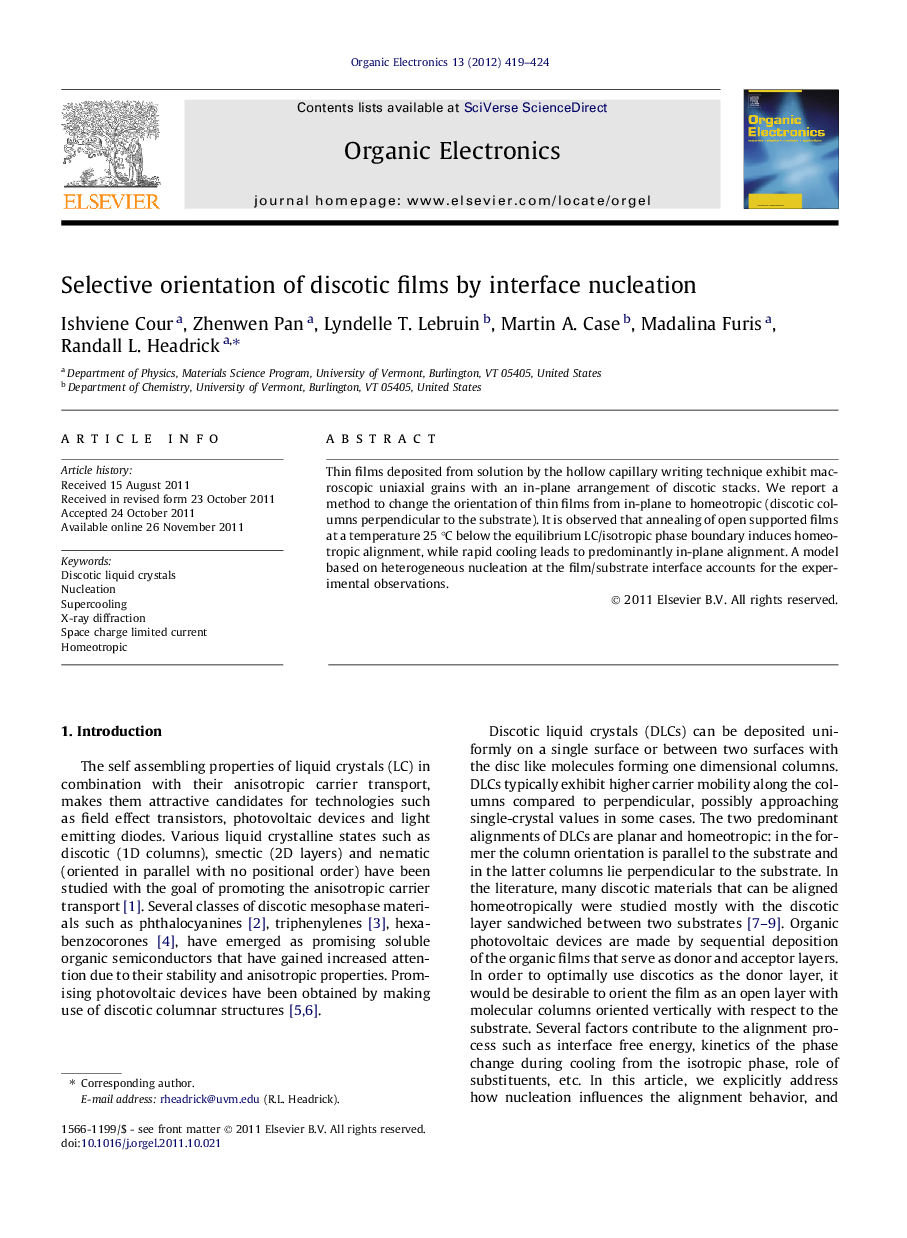| Article ID | Journal | Published Year | Pages | File Type |
|---|---|---|---|---|
| 1267635 | Organic Electronics | 2012 | 6 Pages |
Thin films deposited from solution by the hollow capillary writing technique exhibit macroscopic uniaxial grains with an in-plane arrangement of discotic stacks. We report a method to change the orientation of thin films from in-plane to homeotropic (discotic columns perpendicular to the substrate). It is observed that annealing of open supported films at a temperature 25 °C below the equilibrium LC/isotropic phase boundary induces homeotropic alignment, while rapid cooling leads to predominantly in-plane alignment. A model based on heterogeneous nucleation at the film/substrate interface accounts for the experimental observations.
Graphical abstractFigure optionsDownload full-size imageDownload as PowerPoint slideHighlights► Crystalline films of discotic phthalocyanine have been produced from solution. ► Selective orientation of discotic columns can be achieved by thermal annealing. ► Nucleation theory suggests different supercooling temperatures for each alignment. ► The mobility increased by two orders of magnitude upon switching alignment. ► The nuclei grow much faster along the columnar direction than perpendicular to it because the growth is limited by kinetics.
